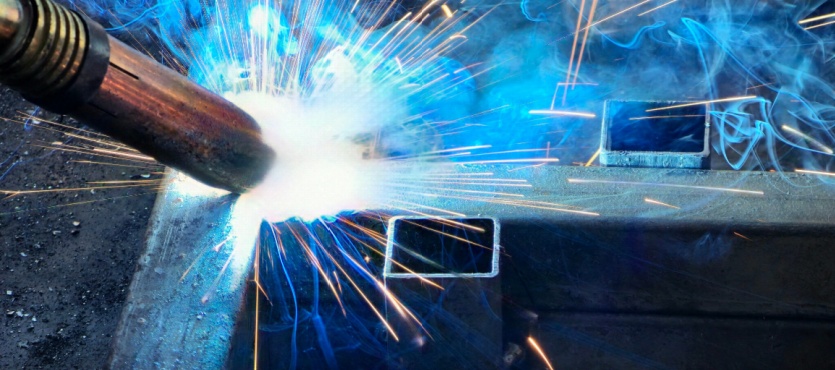In industries where safety, strength, and performance are non-negotiable, weld quality is one of the most critical factors in determining whether a structure or component will hold up under pressure—or fail. High-stress applications, such as structural supports, heavy machinery, transportation equipment, and industrial frameworks, place extreme demands on welded joints. These environments leave no room for weak welds, shortcuts, or inconsistencies.
Whether it’s bearing heavy loads, enduring continuous vibration, or withstanding impact and environmental exposure, a high-quality weld ensures the integrity of the entire system. Understanding why weld quality matters in these demanding conditions can help builders, engineers, and project managers make better decisions—and avoid costly consequences.
What Makes an Application “High-Stress”?
A high-stress application is any environment where welded components are exposed to significant mechanical forces, repeated motion, environmental wear, or dynamic load changes. These conditions are commonly found in structural beams for buildings, bridges, and towers; agricultural and construction equipment; trailers and heavy-duty vehicle frames; material handling systems; and industrial machinery. High-pressure pipe systems and components subject to constant vibration also fall into this category. In all of these examples, the welds must endure constant or fluctuating loads without failure, making weld quality absolutely essential to the integrity and safety of the entire structure or system.
Weld Integrity = Structural Integrity
Welds are often the most critical connection points in a structure. When components are bolted, the fasteners can be replaced. But when materials are welded, the joint becomes part of the structure itself. If a weld fails in a high-stress environment, it compromises the strength and stability of the entire system.
High-quality welds provide proper penetration, consistent fusion, and clean, uniform profiles that distribute stress evenly. This allows welded joints to withstand dynamic forces without cracking, shifting, or losing alignment. In contrast, poor welds may have weak points that become stress concentrators—leading to premature fatigue and failure.
The Role of Visual Quality
While some applications may call for advanced testing, visual weld quality is often the first and most practical measure of a weld’s strength and consistency. Visual signs of a strong weld include uniform bead width, smooth transitions, proper size, and lack of visible defects like undercutting, slag inclusions, or spatter.
Experienced fabricators understand how to recognize and prevent common issues before they become performance problems. Even without non-destructive or destructive testing, a visually sound weld—created using proper technique, preparation, and heat control—can reliably perform in demanding environments.
Material Compatibility and Proper Technique
In high-stress applications, it’s essential that the base metals and filler materials are compatible and suitable for the forces at play. Different metals expand and contract at different rates, and not all filler rods or wires are made for every environment.
High-quality welding also means selecting the right process—Mig, Tig, or Stick—for the job. Factors like joint configuration, metal thickness, and accessibility all play a role. Skilled welders account for these variables, applying the appropriate technique to achieve a consistent and durable bond.
Consequences of Poor Weld Quality
In high-stress settings, the consequences of poor weld quality can be severe and far-reaching. Structural failure or deformation is one of the most serious risks, potentially leading to the collapse of supports or frameworks. Equipment malfunction and unexpected downtime are also common outcomes, disrupting operations and resulting in costly delays. Poor welds can accelerate wear and increase the need for ongoing maintenance, driving up long-term expenses. Additionally, substandard welding can pose significant safety hazards, exposing companies to legal liability and endangering workers and the public. In many cases, failed welds lead to expensive rework—or the complete replacement of parts or assemblies that could have been avoided with proper fabrication from the start.
Long-Term Performance and Durability
High-stress applications often operate in environments that add wear beyond mechanical force—such as exposure to water, chemicals, high temperatures, or outdoor elements. A high-quality weld resists corrosion, fatigue, and long-term stress concentration far better than one done quickly or incorrectly.
Well-executed welds also reduce the likelihood of future repairs, increasing uptime and lowering maintenance costs over the lifetime of the equipment or structure. This kind of reliability is invaluable in industries where every hour of downtime costs money—or safety.
Trusted Welds for Demanding Jobs
When the stakes are high, weld quality isn’t just a detail—it’s a critical element of the entire build. High-stress applications demand strong, consistent, and professionally executed welds to ensure long-term safety and performance.
At Sizemore Welding, we specialize in fabrication that holds up under pressure. From heavy-duty structural components to demanding industrial equipment, our team delivers solid, reliable welds backed by decades of experience. To learn more about our capabilities or to get started on a project, contact us today.

